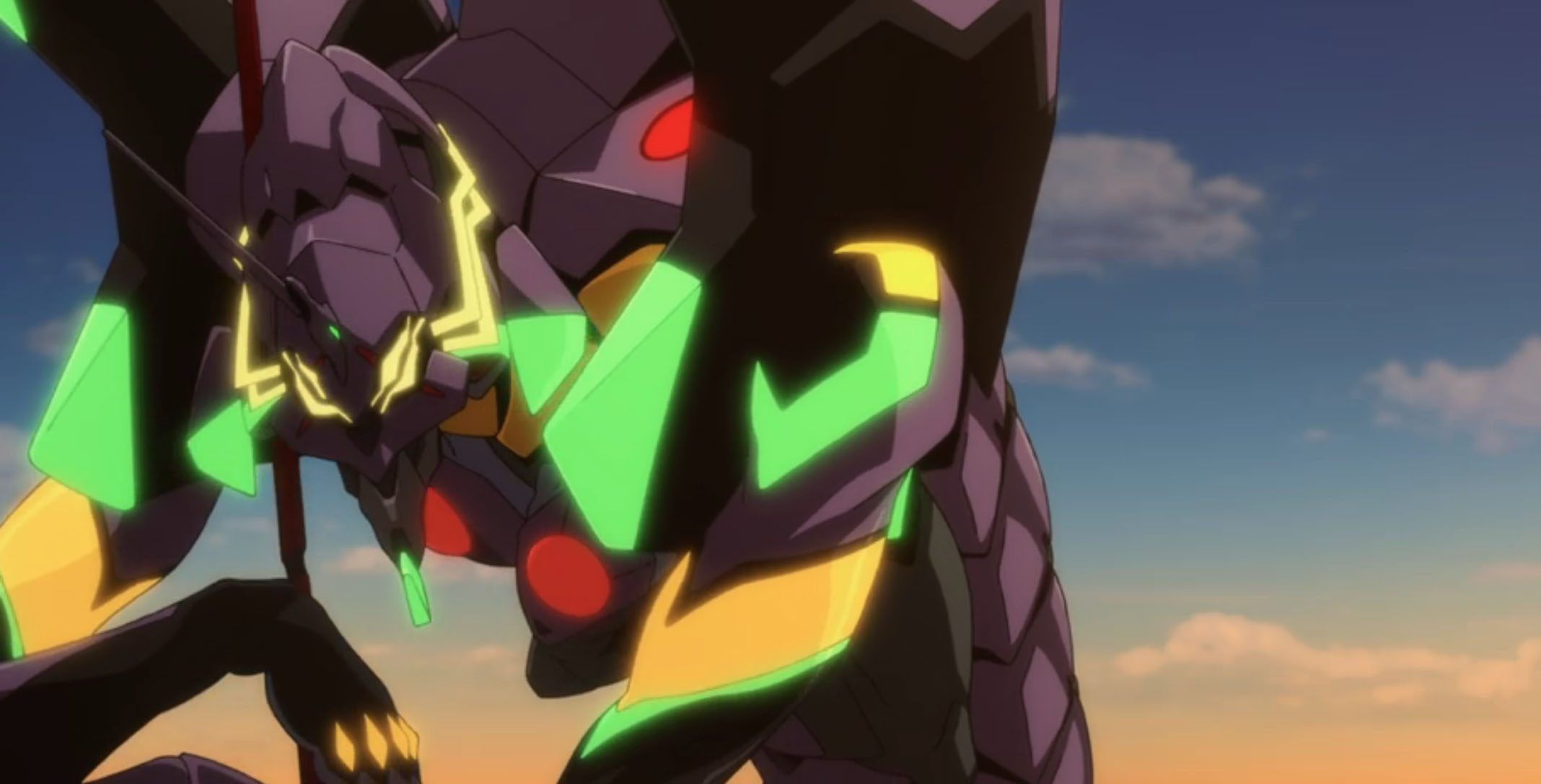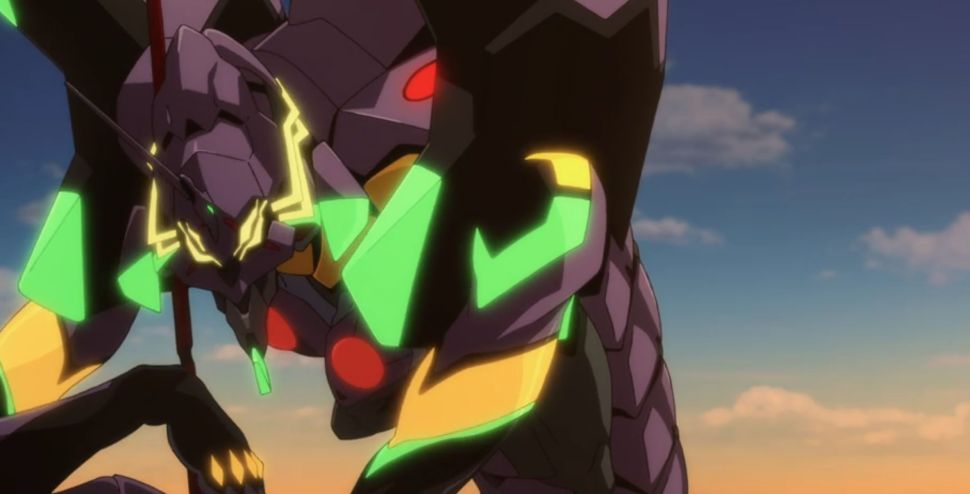
Evangelion: 3.0+1.0 Thrice Upon a Time Amazon Prime Video
The final Evangelion film is here, and it evokes a complicated history through its title alone: Evangelion 1.0+3.0 Thrice Upon a Time. It’s the fourth film in the Rebuild of Evangelion series, which began in 2007 as an updated retelling of Neon Genesis Evangelion, Anno Hideaki’s landmark mecha anime from 1995. After being relatively hard to find outside Japan, the show’s 26 episodes arrived on Netflix in 2019 alongside two related movies from the era. On August 13, 2021, all four subsequent Rebuild films made their streaming premiere on Amazon Prime, including the saga’s final chapter, which played in Japanese cinemas earlier this year. For the first time, every piece of the puzzle is just a few clicks away, but a series this dense can be a challenge for new and old viewers alike. After all, Thrice Upon a Time functions as a definitive ending to not just the new film series, but to every version of Evangelion over the last 26 years.
The franchise, from anime studio Gainax, begins as familiar robots-versus-kaiju fare but grows increasingly complex until it stands head and shoulders above most entries in the genre. It’s an emotional behemoth, and its focus rarely wavers from its lonely, traumatized teenage characters, whose inner lives are woven into the fabric of the Evangelions, i.e., the enormous robots they pilot to defeat monstrous, inter-dimensional beings known as the Angels. The series is littered with Christian imagery, acting as an inversion of Ancient Astronaut stories — in which pyramids and ancient structures built by colonized peoples were said to be the work of aliens — with a premise that blends science fiction with Biblical mythology. Apocryphal figures like Adam and Lilith are key to its backdrop, but their appearance in the franchise is rather unexpected.
The head-spinning larger picture is vital to understand Anno’s journey alongside this saga, and the sheer number of different conclusions (and combinations of conclusions) there have been throughout the years.
However, the series’ biggest twist on the mecha genre is the Evangelions themselves. Like the Gundams before them, the Evas are a technological power fantasy, but they’re made to take terrifying biomechanical forms. Their secrets are best discovered while watching the show, though the franchise has few straightforward answers. Owing to production issues and a late shift in focus and tone, the show’s final episodes set the stage for a series that would frequently veer off its literal course and towards a realm of abstraction — which would in turn result in a feedback loop of dissatisfied fans, and newer versions of the story that seemed to exist in direct response.
As Evangelion 1.0+3.0 Thrice Upon a Time seeks to end this cycle for good, a look back at the story so far is not just warranted, but necessary.
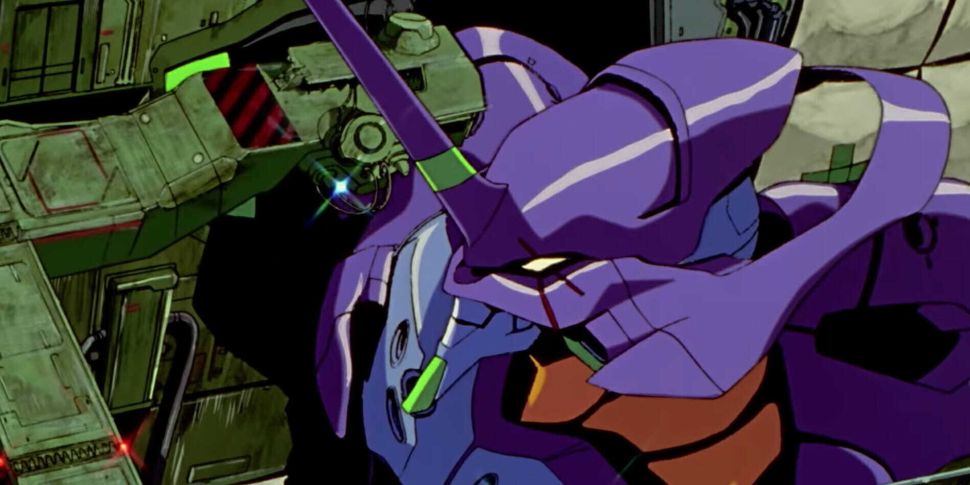

Neon Genesis Evangelion Netflix
The TV Show: Neon Genesis Evangelion
On Netflix: Neon Genesis Evangelion (1995-1996)
Set in the year 2015 — a decade and a half after a global cataclysm known as the Second Impact — the story of Neon Genesis Evangelion follows Ikari Shinji (Ogata Megumi), a lonely, depressed fifteen-year-old living in the rebuilt city New Tokyo-3. His mother died when he was young, and his father, Ikari Gendo (Tachiki Fumihiko), cruelly abandoned him to lead the paramilitary organization NERV, the last line of defense standing between the invading Angels and the prophesied Third Impact, another global catastrophe.
When the series begins, Shinji is finally summoned by Gendo, albeit indirectly — he’s escorted, during an enormous kaiju battle, by NERV’s driven, beer-guzzling captain, Katsuragi Misato (Mitsuishi Kotono) — but the warm family reunion he hoped for turns out to be a cold, calculating recruitment. Shinji, as it happens, is one of a handful of children chosen to pilot NERV’s Evangelions, and before he knows it, he’s thrust into the center of the story.
The struggle before the main characters, whether or not they’re fully aware of it, is a never-ending tug of war between individuality and loneliness.
The show’s first dozen or so episodes skillfully bide their time. They balance fluid action scenes and creeping imagery with quiet moments focused on Shinji and his fellow Eva pilots, the aloof Ayanami Rei (Hayashibara Megumi) and the boisterous Soryu Asuka Langley (Miyamura Yuko), along with a litany of NERV personnel, whose discoveries about the existential mysteries at hand begin to paint a terrifying picture. The show, though it features bits of slapstick humour and poorly-aged, sexualized “fan service,†rarely strays from its dramatic narrative, in which the encroaching end of the world makes lead and supporting characters alike reflect on their relationships, and themselves. Shinji is the fulcrum around which these characters pivot, as each one’s central traits seem to entice and challenge him in equal measure, though at his core, his childhood abandonment makes him afraid to truly connect with them.
This theme, of struggling to connect with people, manifests in the show’s larger mechanics. What makes the Angels nigh-unstoppable is their ability to conjure impenetrable force fields, known as AT fields — or “Absolute Terror fields†— auras which radiate from the ego of every living being. Large enough creatures like the Angels and Evas can tap into these fields and use them as weapons, but these are also the intrinsic forces keeping individual souls separate from one another. NERV’s shadowy superiors, the cult-like organization SEELE, hopes to use the Angels to transcend these individual barriers through a process known as “Instrumentality,†which would return humanity to its primordial, liquid form, thus melding all human consciousness and ego into one, and putting an end to suffering and alienation for good.
The struggle before the main characters, whether or not they’re fully aware of it, is a never-ending tug of war between individuality and loneliness, a messy spiritual dilemma inherent to existence itself. The Eva pilots are also given a taste of what Instrumentality might feel like, whenever they board the Evangelions and float inside a substance resembling the amniotic fluid of the womb. Their synchronicity between the pilots and their twisted, biomechanical Evangelions, while perversely comforting, represents a prenatal form, one which blurs the physical, psychological and spiritual lines between them. The traits defining each character are also what most terrifies them, so as much as their battle lies with the hellish Angels, their ultimate enemy is the temptation to forgo individuality itself, and simply cease to be.
As the show delves deeper into its characters, and into its discomforting mythos, it becomes a stark portrait of depression and the ways in which trauma manifests. This becomes the series’ primary focus about two thirds of the way through, and by the time it reaches its final two episodes, it leaves its story of robots and monsters so far behind that it exits the realm of the literal altogether. Owing to a combination of budgets and scheduling issues (and Anno deciding the story’s direction late in the game), episodes 25 and 26 of Neon Genesis veer far off the course of traditional 2D animation. They incorporate not only several live-action elements, but sketches and storyboards, which give the two-part finale a quasi-unfinished feel. However, this closing hour acts as an incisive deconstruction of the series’ characters; it explores them from the inside out, and magnifies the most troubled parts of their psychologies in the form of abstract montages that get to the heart of who they are, culminating in a rousing spiritual catharsis in an un-real, psychological dreamscape.
While these final two entries are wildly different from initial episodes, they remain perfectly in tune with the spirit of the show. However, at the time, not everyone was pleased with Anno’s aesthetic departure, though few could have foreseen the domino effect this would have. The ending to Neon Genesis was just the beginning.Â
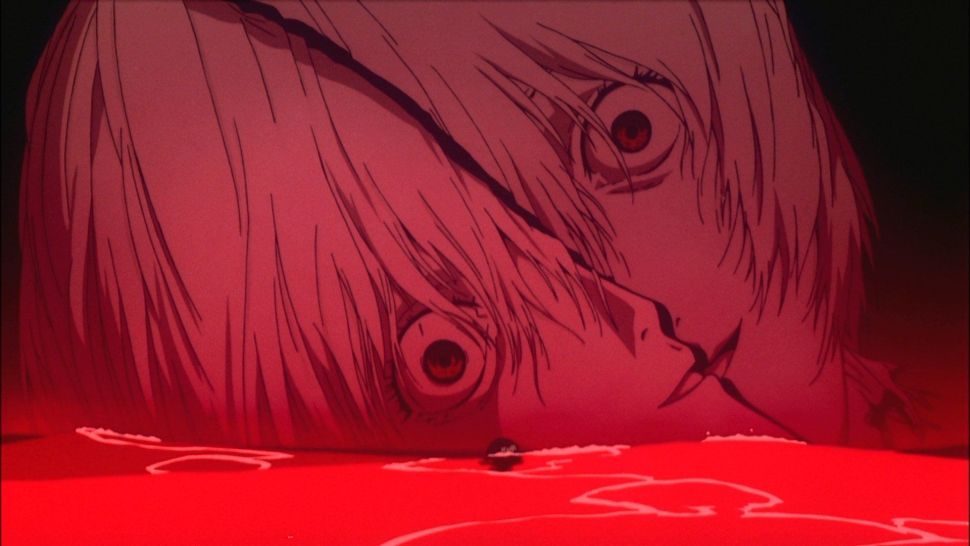

The End of Evangelion Netflix
The Alternate Endings: Death(True)² and The End of Evangelion
On Netflix: Evangelion: Death(True)² (1997) and The End of Evangelion (1997)
Apart from the then-ongoing manga series, the theatrical film Neon Genesis Evangelion: Death & Rebirth (1997) was the first new story audiences saw after the TV show. It isn’t available on Netflix in its original form, and explaining the cut that is available — Evangelion: Death(True)² — requires a bit of leg work. The many versions of Death & Rebirth serve the same purpose: they act as a bridge between the original series and the landmark theatrical feature The End of Evangelion, a radically different version of episodes 25 and 26. Neither Death nor Rebirth — the film was split into two distinct halves — are strictly “necessary†to get a handle on the plot, but the Evangelion saga is about so much more than the literal and the logistical.
Death is a clip show of sorts, one that condenses the story of the first 24 episodes down to a brisk 72 minutes. Rebirth, meanwhile, was originally intended to consist of a brand-new alternate ending, but more budget and scheduling constraints resulted in it being turned into a teaser, containing footage that would eventually become the first half hour of The End of Evangelion. When the first segment, Death, premiered on Japanese television, it was re-edited slightly and released as Evangelion: Death(True), which would in turn be further edited to create Death(True)², meant for theatrical presentation alongside The End of Evangelion (in a combined experience called “Revival of Evangelionâ€). None of these details are worth remembering individually, and yet, the head-spinning larger picture is vital to understand Anno’s journey alongside this saga, and the sheer number of different conclusions (and combinations of conclusions) there have been throughout the years.
Where Neon Genesis felt like an attempt to take the mecha genre more seriously, The End of Evangelion feels, in turn, like a rebuke of all the individual and collective impulses that might prevent the genre from maturing.
Evangelion: Death(True)2, the 68 minute film that now resides on Netflix, is a version of Death twice removed. However, instead of simply being a glorified “Previously On†for Neon Genesis, it stands alone as a definitive statement about what Evangelion is, always was, and would forever be. While it recaps the TV series, it begins by skipping around in time, and drops viewers into some of the show’s most emotionally gut-wrenching scenes — specifically, those involving Shinji’s tender relationship with a mysterious new Eva pilot, Nagisa Kaworu (Ishida Akira). From there, the film plays out not unlike episodes 25 and 26, with impressionistic montages interspersed between completed scenes, resulting in an experience that, rather than re-explaining the world as it unfolds around the characters, evokes their deep internal anguish.
The franchise continues to capture that anguish with The End of Evangelion, a film that takes all of Shinji’s pain and self-loathing and causes it to metastasize. Where Neon Genesis felt like an attempt to take the mecha genre more seriously, The End of Evangelion feels, in turn, like a rebuke of all the individual and collective impulses that might prevent the genre from maturing.
The ending of Neon Genesis involved an abstract depiction of self-actualization, and it was met with venom, in the form of hate letters and death threats to Anno and graffiti on the Gainax offices; these are even visible in the brief live action sequences of The End of Evangelion. The film, in turn, seethes with contempt towards this segment of fan response, and crafts a version of Shinji’s story in which inertia, not catharsis, takes center stage.
However, the film doesn’t simply exist as an ongoing conversation with its audience. On one hand, it tells a version of the ending that seems, at first, more literal than episodes 25 and 26, in that it takes place in the character’s physical vicinity, instead of within some internal psychological space. On the other hand, it uses even this supposedly literal setup as a platform for an abstract extravaganza of transcendent imagery, which pushes the series’ biblical concepts to grotesque extremes. It creates an even more difficult version of the existing story, one in which self-actualization isn’t merely a series of realizations or decisions, but an acceptance of all the ugliness and misery that continues to fester, long after the heroic decision to keep on existing.
The End of Evangelion is a fascinating externalization of despair, and it finds, in its own unique way, glimmers of hope in a sea of misery. However, as much as Anno may have intended otherwise, its title is a lie, and not just to the audience. Looking back, it feels almost like a self-delusion: the idea that he might be able to leave this story behind, and in such an ugly and volatile place.
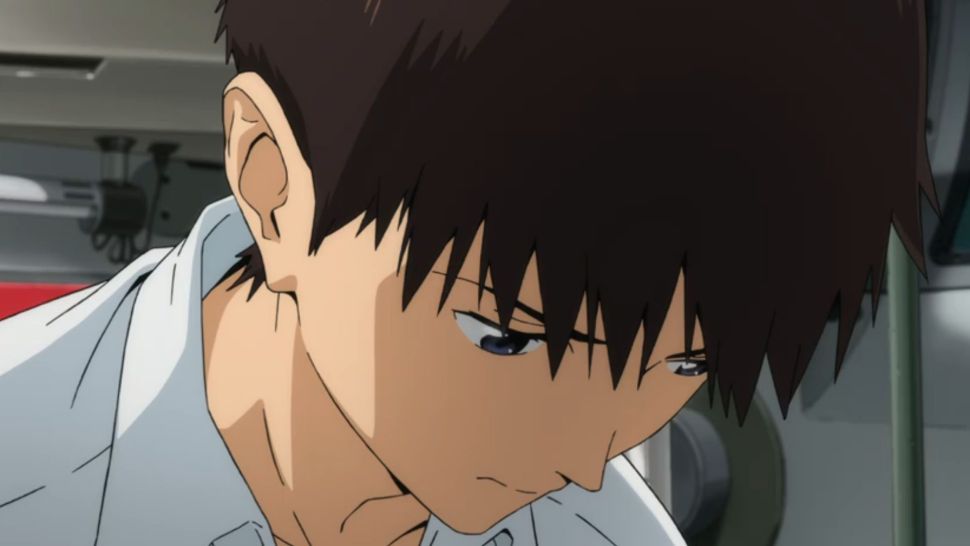

Evangelion: 3.0+1.0 Thrice Upon a Time Amazon Prime Video
The Rebuild Film Tetralogy
On Amazon Prime: Evangelion: 1.11 You Are (Not) Alone (2007), Evangelion: 2.22 You Can (Not) Advance (2009), Evangelion: 3.33 You Can (Not) Redo (2012) and Evangelion: 3.0+1.0 Thrice Upon a Time (2021)
 The first Rebuild film, Evangelion: 1.0 You Are (Not) Alone is a strange beast (Evangelion 1.11 is its slightly extended version). It re-tells the first six episodes of the series as they originally unfolded, with only a few minor differences, and with some updated CG animation. The new tech allows the Angels to move and transform in unsettling ways, though for the most part, the film plays out like a remake — that is, until its final scene, which teases an eerie, in-world awareness of this narrative repetition.
Evangelion: 2.0 You Can (Not) Advance (like its mildly re-adjusted cut, Evangelion 2.22) begins similarly, as a re-telling of the next few episodes of Neon Genesis. However, the minor departures slowly become more explicit — like Asuka’s new name, Shikinami Asuka Langley, and her slightly modified backstory. Before long, these differences add up, and each minor change becomes especially uncanny once it affects familiar events in a major way.
Anno doesn’t simply retread old ground, but rather, he lays the foundation for yet another iteration of the Evangelion cycle, only this time, maybe it can be broken.
With the first two Rebuild films, Anno doesn’t simply retread old ground, but rather, he lays the foundation for yet another iteration of the Evangelion cycle, only this time, maybe it can be broken. The ending of the second film finally pushes the story in a new direction, though what form that direction takes is best experienced first-hand, while watching Evangelion: 3.0 You Can (Not) Redo. It’s by far the shortest of the Rebuild films — even its updated release, Evangelion 3.33, runs a mere 96 minutes — though it puts its characters through the emotional wringer in deeply upsetting ways, and it presents a world in which Shinji’s deep self-loathing has had lasting consequences for the people around him. The third film isn’t just an alternate telling, but is perhaps the most painful possible version of this story.
The fourth film, Evangelion: 3.0+1.0 Thrice Upon a Time, is just as emotionally volatile. However, at 155 minutes in length — a full hour longer than its predecessor — it also bides its time, as its characters figure out ways to live, and to continue existing, when all seems lost. After our own world ground to a halt last year, it feels oddly perfect that Anno’s final chapter should enter a world hoping to emerge from the darkness. However, what makes Thrice Upon a Time such a fitting conclusion is that Anno winds the entire thematic and aesthetic history of Evangelion back around the series’ neck so tightly that breaking free from its grasp would require an act of benevolence. And given the way the series wraps up, he may very well have found it, in the form of a mesmerizing crescendo that feels, at once, both familiar and entirely new.
It really is the end this time, and it feels incredibly liberating.
Keeping Watch is a regular endorsement of TV and movies worth your time.

